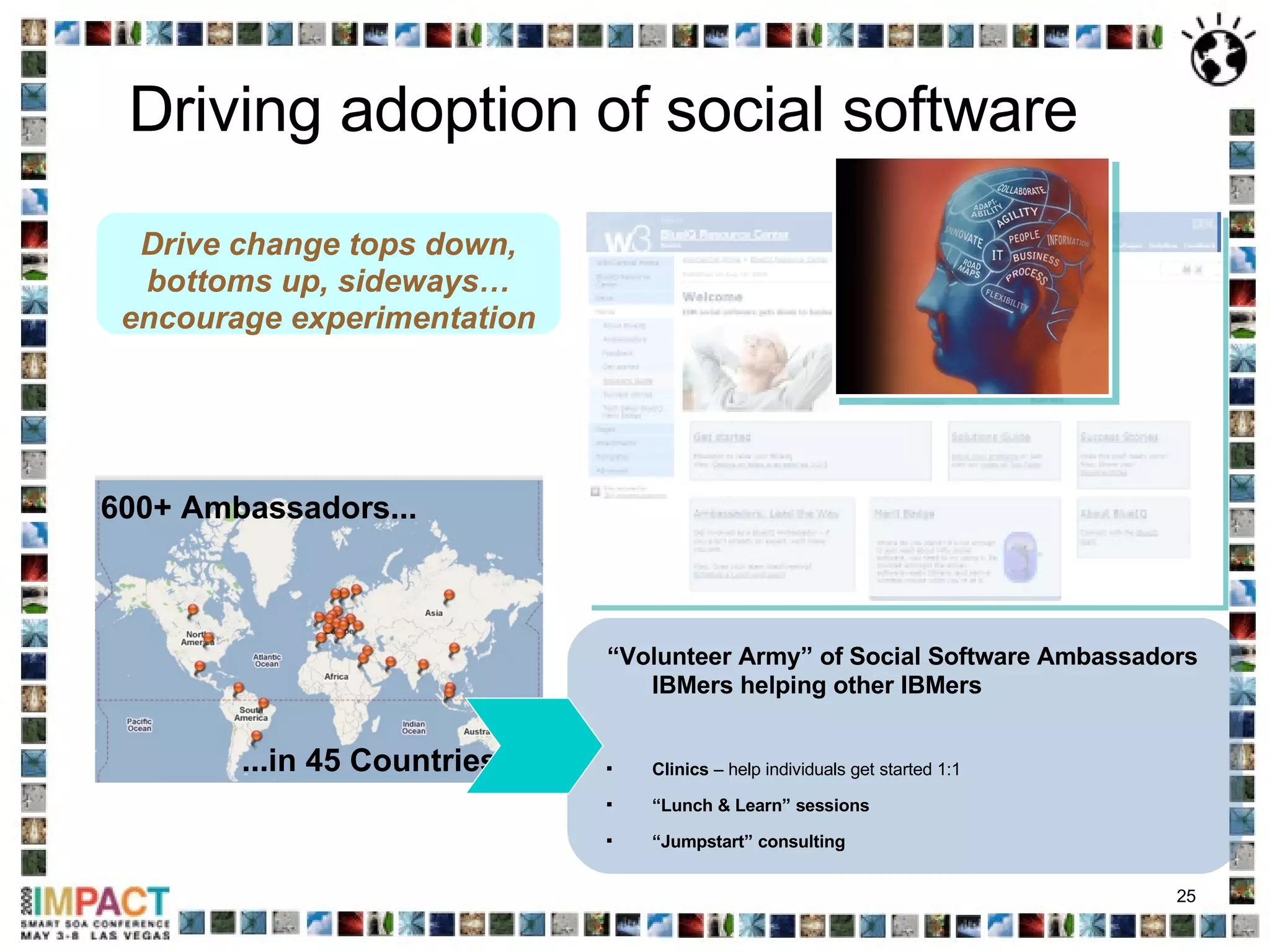This document discusses the adoption of Web 2.0 technologies in business to drive innovation, improve relationships, and enhance results. It highlights the importance of social software in enabling collaboration, knowledge sharing, and improving overall work efficiency. Additionally, it provides insights on successful implementation strategies, including leveraging social networks, fostering a culture of participation, and offering support through training and community-driven approaches.





























